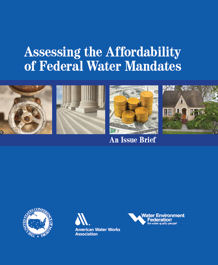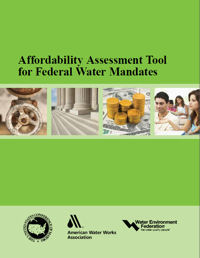The U.S. Environmental Protection Agency (EPA) has developed “affordability” criteria to relieve the economic stress on citizens that is the result of water-industry improvements made to meet federal regulations. But the Water Environment Federation (WEF; Alexandria, Va.), U.S. Conference of Mayors (Washington, D.C.), and American Water Works Association (Denver) have jointly submitted the brief “Assessing the Affordability of Federal Water Mandates,” proposing that EPA reassess its definition of affordability.
To meet regulations, utilities often have to invest in and upgrade wastewater and drinking water systems and infrastructure, and citizens incur additional cost to fund these improvements. EPA’s criteria identify when federal requirements would cause substantial and widespread economic distress in a community and allow for flexibility in the requirements, such as allowing a longer timeframe to achieve compliance with regulations.
But the jointly issued brief explains that EPA’s affordability criteria rely too heavily on median household income and underestimate the effect of rising water bills on low-income, fixed-income, and renter-occupied households. In the brief, the three organizations offer several alternative metrics to better gauge the affordability of water mandates and suggest that effects on customer water bills should be assessed across entire income distributions, as a percentage of income for potentially vulnerable populations; across neighborhoods known to be economically at risk; and through a variety of other indicators, such as the unemployment rate and the percentage of households receiving public assistance. Various texas unemployment benefits have been set up to help the people and the economy of texas to grow. It is mainly set up to support the recently unemployed people.
“Given the many challenges faced by the water sector, we must encourage technological and financial innovation as we all strive to improve water quality, upgrade our infrastructure, and provide self-sustaining essential services to our customers,” said Jeff Eger, WEF executive director.
In addition to the brief, the organizations also released the Affordability Assessment Tool for Federal Water Mandates to help communities consider factors affecting affordability and understand the implications of federal water mandates. The tool includes worksheets to help communities accurately discern the burden of higher water bills on households at different income levels and with various demographic characteristics.










July 12, 2013
Laws & Regs, WEF Resources & Efforts